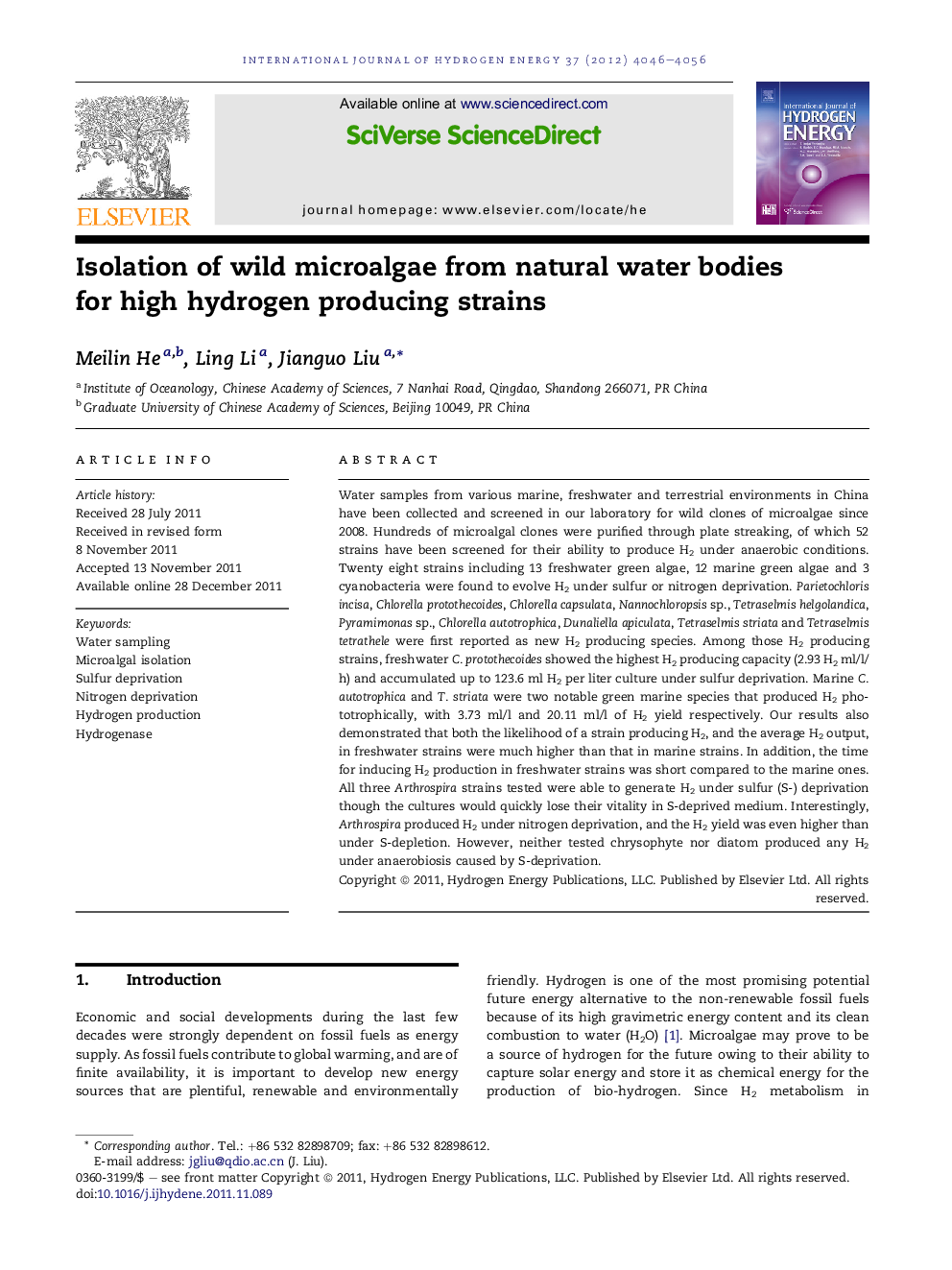| کد مقاله | کد نشریه | سال انتشار | مقاله انگلیسی | نسخه تمام متن |
|---|---|---|---|---|
| 1275458 | 1497564 | 2012 | 11 صفحه PDF | دانلود رایگان |

Water samples from various marine, freshwater and terrestrial environments in China have been collected and screened in our laboratory for wild clones of microalgae since 2008. Hundreds of microalgal clones were purified through plate streaking, of which 52 strains have been screened for their ability to produce H2 under anaerobic conditions. Twenty eight strains including 13 freshwater green algae, 12 marine green algae and 3 cyanobacteria were found to evolve H2 under sulfur or nitrogen deprivation. Parietochloris incisa, Chlorella protothecoides, Chlorella capsulata, Nannochloropsis sp., Tetraselmis helgolandica, Pyramimonas sp., Chlorella autotrophica, Dunaliella apiculata, Tetraselmis striata and Tetraselmis tetrathele were first reported as new H2 producing species. Among those H2 producing strains, freshwater C. protothecoides showed the highest H2 producing capacity (2.93 H2 ml/l/h) and accumulated up to 123.6 ml H2 per liter culture under sulfur deprivation. Marine C. autotrophica and T. striata were two notable green marine species that produced H2 phototrophically, with 3.73 ml/l and 20.11 ml/l of H2 yield respectively. Our results also demonstrated that both the likelihood of a strain producing H2, and the average H2 output, in freshwater strains were much higher than that in marine strains. In addition, the time for inducing H2 production in freshwater strains was short compared to the marine ones. All three Arthrospira strains tested were able to generate H2 under sulfur (S-) deprivation though the cultures would quickly lose their vitality in S-deprived medium. Interestingly, Arthrospira produced H2 under nitrogen deprivation, and the H2 yield was even higher than under S-depletion. However, neither tested chrysophyte nor diatom produced any H2 under anaerobiosis caused by S-deprivation.
► Ten species of microalgae as novel H2 production species were first reported.
► Chlorella protothecoides is a high H2 yield freshwater strain in sulfur starvation.
► Chlorella autotrophica and Tetraselmis striata are marine strains photoproduce H2.
► Arthrospira generated more H2 under nitrogen deprivation than sulfur depletion.
► No tested chrysophyta and diatom produced H2 under sulfur-deprived condition.
Journal: International Journal of Hydrogen Energy - Volume 37, Issue 5, March 2012, Pages 4046–4056